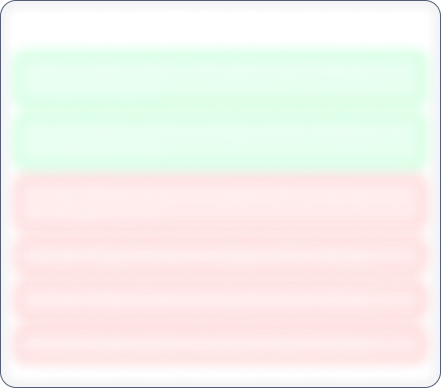Festive Sale – 50% Off!
Kesar Enterprises

No Data Available
Investor Sentiment
Kesar Enterprises Share price and Fundamental Analysis
Key Metrics
Stock Returns
Stock Heatmap

No Stocks
Smart Score

Unlock Smart Score
See Detailed Analysis & Insights


Unlock Insights
See Detailed Analysis & Insights
Technicals
Returns Calculator
If you would have investedResearch Report
No Research Report
Corporate Action
Financials
Key Ratios
ROE
Avg ROE (3 Yrs) : NaN%
ROCE
Avg ROCE (3 Yrs) : NaN%
ROA
Avg ROA (3 Yrs) : NaN%
NPM
Avg NPM (3 Yrs) : NaN%
Dividend History
5 Year FactSheet
Documents

No Data Available
News
Kesar Enterprises Management and History
Company Management


Unlock Management Data
See Detailed Analysis & Insights
Company History
Kesar Enterprises (KEL) (formerly known as The Kesar Sugar Works) was incorporated in Aug.'33. It belongs to the Kilachand Devchand group. The Company deals in the production of Sugar, Spirit, Ethanol, Bagasse based Power located at Baheri, Uttar Pradesh. The Company is at present managed by Harsh R Kilachand, chairman-cum-managing director. In Sep.'92, KEL came out with a rights issue (4:5) of 28.94 lac 13.5% FCDs of Rs 30 each, aggregating Rs 8.68 cr to part-finance the modernisation and expansion of the company's distillery (cost : Rs 10.40 cr) to produce extra neutral alcohol (ENA) and Indian-made foreign liquor (IMFL).
The company manufactures various products such as sugar, industrial alcohol and country liquor. Apart from this, it also has large storage installations for handling liquid bulk cargo. KEL has two subsidiaries, Amber Distilleries and Kesar Marble & Granites, with which it had set up a 100% EOU for processing and polishing granite. From 11th July,2002 Kesar Marble & Granites ceased to be subsidiary of KEL.
During 1999-2000, the company has entered into a Project Services Agreement with Mahindra Realty Infrastructure Developers Ltd (MRIDL), a wholly owned subsidiary of Mahindra & Mahindra Ltd for developing its land at Goregoan - Mumbai and construction for sale, residential and commercial tenements. It has also got approval from the authorities to start construction activities.
To improve the quality and quantity of alcohol the company has increased the license capacity from 13,092 KL/year to 16365 KL/year and subsequently total production will be increased from the current financial year.
In July 2006, the Company sold its entire investment of 1,40,000 equity shares of ADL for a total consideration of Rs. 120 Lacs, plus repayment of the interest free loan of Rs. 50 lacs given earlier by the Company to ADL. Hence, with effect from 25 July, 2006, ADL ceased to be a wholly owned Subsidiary of the Company.
On 21. 1. 2008, Kesar Terminals & Infrastructure Ltd. (KTIL) was incorporated as a Wholly-Owned Subsidiary of the Company.
The Hon'ble High Court of Bombay had passed an Order on 12 March, 2010 sanctioning the Scheme of Arrangement by way of Demerger, for transfer of the undertaking, business, activities and operations pertaining to the Storage Division / Undertaking of the Company into the erstwhile Wholly-owned Subsidiary Company viz. Kesar Terminals & Infrastructure Ltd. [KTIL] as a going concern with effect from the Appointed Date i.e. 1 January, 2009. The Effective Date of the Scheme is 29 March, 2010.
Erection of the boiler in the distillery at Baheri was completed in August 2010 and commissioned in September 2010. As per the Hon'ble High Court sanctioned Scheme of Arrangement for Demerger, on allotment of 47,53,113 Equity Shares of Rs.10/- each fully paid-up aggregating to Rs.4,75,31,130/- to the shareholders of the Company by Kesar Terminals and Infrastructure Limited (KTIL) on 1 June, 2010. The post-allotment holding of the Company in KTIL reduced from 100% to 9.518% and therefore the Holding Subsidiary Relationship between the Company and KTIL has ceased with effect from 1 June, 2010.
The 44 mw Bagasse based Cogeneration Power Plant at Baheri, U.P. was completed in July 2012 and the plant started commercial operations from 1 October, 2012. With effect from 1 July 2013, the Company has merged its Agrotech Division into Seed Division, in view of surrender of the farm lands by the Company in June 2013, which were declared as surplus.
Kesar Enterprises Share Price
Kesar Enterprises share price reflects investor sentiment toward the company and is impacted by various factors such as financial performance, market trends, and economic conditions. Share price is an indicator which shows the current value of the company's shares at which buyers or sellers can transact.
Kesar Enterprises Market Cap
Market capitalization of Kesar Enterprises indicates the total value of its outstanding shares. Marketcap is calculated by multiplying share price and outstanding shares of the company. It is a helpful metric for assessing the company's size and market Valuation. It also helps investors understand how Kesar Enterprises is valued compared to its competitors.
Kesar Enterprises PE Ratio
Kesar Enterprises PE ratio helps investors understand what is the market value of each stock compared to Kesar Enterprises 's earnings. A PE ratio higher than the average industry PE could indicate an overvaluation of the stock, whereas a lower PE compared to the average industry PE could indicate an undervaluation.
Kesar Enterprises PEG Ratio
The PEG ratio of Kesar Enterprises evaluates its PE ratio in relation to its growth rate. A PEG ratio of 1 indicates a fair value, a PEG ratio of less than 1 indicates undervaluation, and a PEG ratio of more than 1 indicates overvaluation.
Kesar Enterprises ROE (Return on Equity)
Return on Equity (ROE) measures how effectively Kesar Enterprises generates profit from shareholders' equity. A higher ROE of more than 20% indicates better financial performance in terms of profitability.
Kesar Enterprises ROCE (Return on Capital Employed)
Return on Capital Employed (ROCE) evaluates the profitability of Kesar Enterprises in relation to its capital employed. In simple terms, ROCE provides insight to investors as to how well the company is utilizing the capital deployed. A high ROCE of more than 20% shows that the business is making profitable use of its capital.
Kesar Enterprises Total Debt
Total debt of Kesar Enterprises shows how much the company owes to either banks or individual creditors. In simple terms, this is the amount the company has to repay. Total debt can be a very useful metric to show the financial health of the company. Total debt more than equity is considered to be a bad sign.
Kesar Enterprises Debt to Equity Ratio
The Debt-to-Equity (DE) ratio of Kesar Enterprises compares its total debt to shareholders' equity. A higher Debt to Equity ratio could indicate higher financial risk, while a lower ratio suggests that the company is managing its debt efficiently.
Kesar Enterprises CAGR (Compound Annual Growth Rate)
CAGR shows the consistent growth rate of Kesar Enterprises over a specific period, whether it is over a month, a year, or 10 years. It is a key metric to evaluate the company’s long-term growth potential. Main metrics for which CAGR is calculated are net sales, net profit, operating profit, and stock returns.
Kesar Enterprises Technical Analysis
Technical analysis of Kesar Enterprises helps investors get an insight into when they can enter or exit the stock. Key components of Kesar Enterprises Technical Analysis include:
Support Levels (S1, S2, S3)
There are usually multiple support levels, but the main support levels for a stock are S1, S2, S3. Support levels indicate price points where stock might get support from buyers, helping the stock stop falling and rise.
Resistance Levels (R1, R2, R3)
There are usually multiple resistance levels, but the main resistance levels for a stock are R1, R2, R3. Resistance levels represent price points where Kesar Enterprises shares often struggle to rise above due to selling pressure.
Kesar Enterprises Dividends
Dividends refer to the portion of the company’s profits distributed to its shareholders. Dividends are typically paid out in cash and reflect Kesar Enterprises ’s financial health and profitability.
Kesar Enterprises Bonus Shares
Bonus shares are usually given by companies to make the stock more affordable, increase liquidity, boost investor confidence, and more.
Kesar Enterprises Stock Split
Stock split increases the number of its outstanding shares by dividing each existing share into multiple shares. When the company offers a stock split, the face value of the stock reduces in the same proportion as the split ratio.
Kesar Enterprises Financials
The financials of Kesar Enterprises provide a complete view to investors about its net sales, net profit, operating profits, expenses, and overall financial health. Investors can analyze financial data to assess the company’s stability and also understand how the company has been growing financially.
Kesar Enterprises Profit and Loss Statements
The profit and loss statement of Kesar Enterprises highlights its net sales, net profit, total expenditure, and operating profits in the current financial year. This Profit and Loss statement is crucial for evaluating the profitability and financial stability of Kesar Enterprises .
Kesar Enterprises Balance Sheet
The balance sheet presents a snapshot of Kesar Enterprises ’s assets, liabilities, and equity of shareholders, providing insights into the financials of the company.
Kesar Enterprises Cashflow Statements
Cashflow statements track the company's cash inflows and outflows over a period. It is an essential tool for understanding how well the company manages its liquidity and finances.


